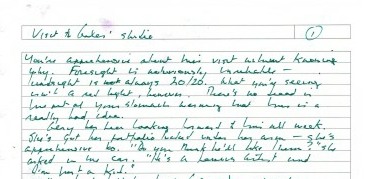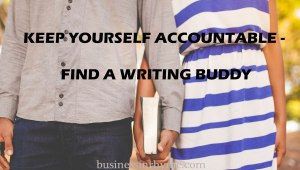This historian Heather Cox Richardson posted this question as a hypothetical and invited responses. As often happens, I realized that my response was the rough draft of a blog post, and because it’s about written communication, this is the blog it belongs in. I have, of course, messed with it a bit. 😉
Aside: If you have any interest in U.S. history and/or the current U.S. political situation and you aren’t already following HCR’s Letters from an American, you should. As a subscriber, I can blather in the comments, but you can read it for free. You can find it in your inbox almost every morning. Also for free, you can listen to the podcast Now and Then, which she recently started with sister historian Joanne Freeman on the Vox/Cafe network.
Well, in my experience plenty of people aren’t horrible to each other online, and “online” isn’t monolithic. Some online situations facilitate horrible behavior and others don’t. My hunch is that a big factor is that online we can’t see the reaction our words are having. In face-to-face (F2F) encounters we can. (Need I say that some people are capable of being horrible F2F and never regretting it.) Humans are sensitive to the physical presence of others — this is even true for those who perform before large audiences. Online we don’t have those cues. We’re posting in isolation.
I suspect that my mostly positive experience over the years on Facebook is partly due to the fact that a significant percentage of my FB friends are, like me, editors and/or writers, or they work in fields where communication is front and center, like education or health care. We pay close attention to the intended audience for what we’re writing or saying. This shapes how we say it, both the words and the tone. Most of us most of the time probably do this without thinking too much about it.
Those of us who move through different circles in the course of a day or write/edit for different audiences become adept at code-switching. I’m currently editing a book-length manuscript about the oil industry. The intended audience includes readers who know a lot about the oil industry and/or a fair amount about economics, but it also includes readers who are interested in energy politics but know little about economics or the oil company at the center of this book. Earlier this year I edited (1) a travel memoir focused on the Adriatic, and (2) a memoir that combines personal history with African-American history and women’s experience into a hard-to-describe whole. I’m here to tell you that no style guide recommendation I know of could apply to all three jobs. Too much depends on the subject at hand and the intended audience.
Consider, too, that plenty of people active online have less-than-stellar skills in written communication, period. They aren’t accustomed to speaking with people outside of their own circle either. In other words, I’m not surprised that many people are horrible to each other online. This makes me value all the more the skills I’ve developed as an editor.
Over the decades I’ve learned to pay close attention not just to individual behavior but to the underlying systems that shape it. Since I joined Facebook 10 years ago and Twitter last year (I held out for a long time, and on the whole I don’t think I’ve missed much), I’ve noticed a big difference between them and the e-groups I’ve been part of since the late 1990s. Part of it has to do with effective moderation (on Facebook and Twitter there effectively isn’t any), but even more it has to do with structure. The structure of social media makes it hard to have anything close to a conversation or discussion. The comment threads move in one direction only. Subthreads surface here and there, but they’re mostly ephemeral.
If you take umbrage at what someone else has posted, it is very hard to ask that person what s/he meant. Since we generally know very little about the person whose post we’re pissed off at, misunderstandings are inevitable, and it’s much easier to fire back a rejoinder than to ask for clarification.
And we’ve learned that Facebook et al. ❤ this. Their algorithms privilege posts that inspire immediate reactions — emojis and sharing — not those that encourage temperate speech and clarification. As writers and editors we know how much communication benefits from the ability to step back for a few minutes (or hours, or days). Social media do not encourage this.
The short version? As writers, editors, and other word people we know that communication is possible across political, regional, ethnic, and all sorts of differences. We know that we have the skills to help it happen. But social media does not make it easy. I hope it doesn’t make it impossible.


 By Shuly X. Cawood
By Shuly X. Cawood


